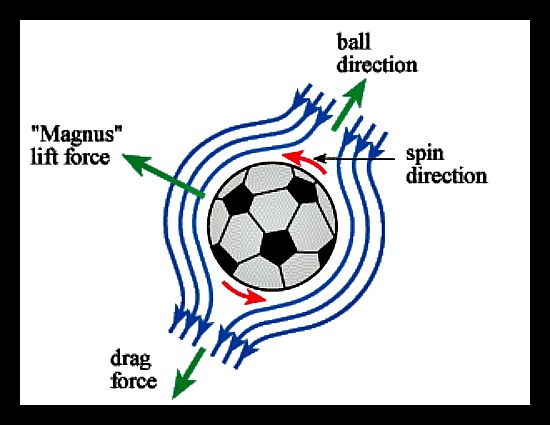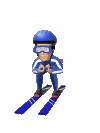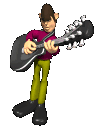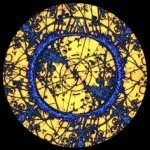Blogs
Our community blogs
-

- 114
entries - 5
comments - 35019
views
Recent Entries
 Latest Entry
Latest Entry
Partner Quiz 6 Solutions
Click for the solutions to partner quiz 6.
- Read more...
-
- 0 comments
- 114
-

- 5
entries - 3
comments - 1600
views
Recent Entries
 Latest Entry
Latest Entry
the physics of a mousetrap car
Last week I began building a mousetrap car with a friend of mine who was given the assignment as an extra credit assignment in their physics class. Their assignment is to build a car whose sole source of energy is a mousetrap. Whoever's car goes the farthest wins. While doing my research I found a few ideas centered around physics that appeared most important to the success of our car.
large wheel to axel ratio
Due to the small size of a mousetrap we only have the ability to rotate an axle a small number of times. To make the car travel as far as possible and to turn the few rotations we have into as much distance as possible we can make the wheels significantly larger then the axle. In this way every full rotation of the axle gives us a significant amount of distance.
Have Some Friction, But Only Enough
Whenever a problem involves using energy as efficiently as possible you will want to decrease friction as much as possible however in this problem we have to be sure we do not remove friction too much. In the case of our back wheels we are going to need a certain amount of friction to ensure that the wheels turn. The force friction between the wheels and the ground will provide a torque to drive our car forward. If there is not enough friction on the wheels they may began to slip on the floor. If this happens our potential energy is being turned into the rotational motion of the wheels but not the translational motion of the car. In other words, we are wasting our precess energy.
Long Fulcrum
Increasing the length of our fulcrum will have an effect similar to that of our large wheels. By increasing the fulcrum we can increase the total distance that we can turn the axle. The Fulcrum is the radius of a circle created by its rotation. If we increase is length we increase the circumference of that that circle and therefore increase the distance that we can pull the axle over. This in turn leads to more rotations of the axle and more rotations of our wheels giving us more distance.
Other then this a lot of it is simply tinkering around with your design until you have maximized your distance with the tools and materials you have. Try it out and see what you think.
- Read more...
-
- 0 comments
- 5
-

 Latest Entry
Latest Entry
newton loves laws
[ATTACH=CONFIG]49[/ATTACH]
oh yeah physics yeah
- Read more...
-
- 0 comments
-

- 2
entries - 2
comments - 1202
views
Recent Entries
 Latest Entry
Latest Entry
Motion , Impulse, Momentum
Last week in Physics we discussed motion. Motion is the ability to work gravity. From motion we started discussing how it caused Collisions & Explosions due to momentum. Dealing with momentum we learned a new formula called p=mv. We also learned that a change in momentum causes impulse.
Learning change impulse confused me because I didnt understand the formula. Through some practicing the formula started to make a little more sense.
- 2
-

- 5
entries - 13
comments - 4089
views
Recent Entries
 Latest Entry
Latest Entry
Light as a Wave Light as a Particle
When light is hitting you it is actually waves or particles of matter. This is because light is matter and light is waves.
Young's double slit experiment is what can prove light is a wave. He projected light through walls with two narrow slits in them. The result on the wall behind is interference patterns which shows that when the waves of light go through the slits they interfere and cross each other. This also shows diffraction which is the bending of waves around obstacles or spreading of waves when they pass through an opening. Another thing that proves light is a wave is red and blue shifts. When a star is moving very quickly at us it appears to us bluer than it actually is because the wavelength decreases.
The Compton effect proved that light is a particle because it shows that light has momentum.The photo electric effect is when light is shined at a thin piece of metal the photons knock electrons out of the metal. This shows that electrons are pieces of matter because they have momentum.
- Read more...
-
- 0 comments
- 5
-

- 5
entries - 12
comments - 20657
views
Recent Entries
 Latest Entry
Latest Entry
The Physics of Walking.
Walking is something that we do every day, without thinking about it. Its seems very simple and straight forward. You just put one foot in front of the other and you move. But it is kind of complicated. It has a lot to do with forces. Newton's laws of motion are involved. So what do forces have to do with walking?
Newton's third law states that every action has an equal and opposite reaction. This is relevant to walking because when you put your foot on the ground, you are applying a force to it. In doing this, the ground also actually applies an equal force onto your foot, in the opposite direction, pushing you forward.

When running, you tend to take longer strides because you are applying a larger force to the ground, so the ground must apply a larger force onto your body. When a larger force is applied to your foot, you go farther, taking a longer step.
Another law of motion that is at work is Newton's first law of motion. An object in motion stays moving, and an object at rests stays at rest unless an outside force acts on it. If people didn't apply forces to the ground, they obviously wouldn't move. This is because the ground then doesn't apply a force to the persons foot. They would stay at rest. But also, if it weren't for gravity, we would all float up into space the second we took one step. This is because the ground applies a force onto us, so we are set into motion. Gravity keeps this force from pushing us all the way into space.
(there is also centrifugal force that wants to fly people off of the planet, but ehh.)

- 5
-

- 18
entries - 9
comments - 2046
views
Recent Entries
 Latest Entry
Latest Entry
Muddling My Way Through Voltage
I'm still struggling with the concept of voltage, but here'smy understanding so far:
Electrostaticpotential is how much work it takes to move a test charge through a field. (W=F∙dr) This requires areference point- I am moving the charge from a certain point to another point. These reference points become the limits of integration, and theequation with substitutions works out to be q1q2/(4πεor)when the charge is moved from zero potential (at infinity). However, to make this measure more helpful weeliminate the charge and make electrical potential (voltage/ potentialdifference) equal to work per unit charge to move any test charge in the givenfield. Therefore the equation forvoltage from a point charge is q/(4πεor). However, this is just a restatement of ournotes and what really gives me trouble is trying to conceptualize voltage. It seems that a common analogy to explainvoltage is a closed circuit of pipes with a pump. Apparently electrical potential can belikened to water pressure in that water (charges) will flow from areas of highpressure (aka potential) to low. In thisscenario potential difference would be the difference in water pressure. Apparently voltage actually used to be called"electrical pressure." Also,voltage can be thought of as the ability to do work. Although this statement requires looking atthings from another perspective- how much work is done when a charge goes fromhigh potential to low- it makes sense when you think about how batteries arerated by voltage. I guess what reallyconfuses me about voltage is that it is not a concrete event or force, but insteada measure of "potential" as in: if I had a hypothetical test chargewhat would be the work necessary to move it from here to there. It's almost as confusing as how fields are a"condition in space" which would cause a particle to move if aparticle was present!
- Read more...
-
- 0 comments
- 18
-
 Latest Entry
Latest Entry
Physics in FIFA
FIFA is a videogame that is meant to be a simulation of a real game of soccer. At EA sports, there goal is to make the game as realistic as possible. They make a new game annualy and attempt to improve the game each year. This year, EA sports has made a new ball physics engine. Their goal is to use real physics to make shooting as realistic as possible. This allows the player to take different types of shots like a curling shot or dipping shot.
This new physics engine uses the accelaration of gravity (9.81 m/s^2) to correctly make the ball drop when taking a shot. It also factors in weather conditions like rain and wind that can also effect the balls movement.

These new ball physics will allow EA sports to create a more realistic soccer simulation.
-

- 5
entries - 15
comments - 11337
views
Recent Entries
Latest Entry
Lalalalalalala
When your in the shower belting out songs so know one can hear you i bet you have never thought that singing would have anything to do with physics. Well youre wrong! It totally does! People can not only hear your singing but they can also feel it! By singing, your voice creates vibrations that form into waves. Sound can be represented in wave form. The amplitude of the wave (the height of the wave) is represented by how loud you are singing. The amplitude is the degree of displacement of teh vibrator. Singing at a louder pitch create more vibrations, while singing at a soft pitch doesnt create as much vibration. This can be heard and felt in a car also. Depending on what the volume and the bass in the car is set at a person sitting in the car can feel the vibrations. Usually you cant feel the wave vibrations of a voice that isnt amplified unless you are on a surface that can allow waves to pass through it easily. For example, you can feel vibrations through would very well.
So next time your mom or dad say stop singing you can tell them i am just practicing my physics

- 5
-

- 5
entries - 10
comments - 5921
views
Recent Entries
 Latest Entry
Latest Entry
Is yawning really contagious?
There has been a firm belief throughout my life that yawning is contagious, meaning that if you were to see someone yawn, it would then cause you to yawn as well. This is in fact true.
Despite many believing it was only a myth, yawning is contagious. Yawning itself is your bodys way of telling you that you need more oxygen. It does not in fact have to do with being tired although it is associated with it. You could be wide awake and yawn just because you need more oxygen. the common belief behing contagious yawning is mirror neurons. For those of you who have taken psychology you should understand this concept, for those who havent, let me explain. Mirror neurons have to do with the saying "monkey see, monkey do". Throughout development these mirror neurons allow you to watch someone do something and then repeat it ourselves. So when seeing someone yawn, the mirror neurons inside of your brain become active and actually replicate the same behavior causing you to yawn.

If you were to look at this photo long enough you may feel a yawn coming on yourself.
Yawns are in fact contagious, but you don't always yawn because you're tired, but because your body needs more oxygen.
- Read more...
-
- 0 comments
- 5
-

- 5
entries - 17
comments - 9220
views
Recent Entries
 Latest Entry
Latest Entry
physics of rain
physics can be found in everything, even the weather!! All precipitation contains elements of physics, however rain is perhaps the most interesting. Rain falls at what is called terminal velocity. this is when an object reaches a cirten speed and stops accelerating. The acceleration around earth is 9.81 meters per second^2. There is a very interesting physics consept as to why the rain water doesnt have a more devistating effect.
most rain drops fall at a velocity of about 18 mph. getting hit with a rock going this speed would be a much different experience than being hit with a rain drop. the reason rain drops arent painful is due to the fact that they have a smaller mass. getting hit with a 4kg rock is a greater force, this is because the force is equal to the mass multiplied by the acceleration (g). Because the rain drops have a next to negligable masses the force that they impact earth with is very little and therefore doesnt cause more damage when it impacts earth.
the shape of a rain drop is also an interesting and under studied phenominon. they are not tear drop shaped, but instead most of them look like small flattened hamburger buns. this is due to their size, bigger or smaller rain drops actually for different shapes depending on their air resistance due to their sizes. overall, rain is just an example of how almost every aspect of our world is determined by physics, even mother natures miracles!
- Read more...
-
- 0 comments
- 5
-

- 41
entries - 34
comments - 8616
views
Recent Entries
Latest Entry
The last...
It's rather crazy to be writing my last ever physics C blog post... I feel as though this day has always seemed so far away.
Now that I'm all reminiscent and whatnot, what better to blog about than a reflection on the course?
First and foremost, it was hard. At least for me. I felt as though all year I was struggling to grasp everything that everyone seemed to get so easily and had to fight ten times harder to get to the same point. The course frustrated me countless times, and I've never done so poorly on so many exams before in my life.
With that in mind, I have absolutely no regrets. Despite poor exams, I learned so much in this class. From how to deal with frustration, to how to develop better studying habits and techniques. I have a far better understanding of what does and doesn't work for me to do well, and taking Physics C has made me feel more ready for college than any other class I've taken, hands down.
What's more, that class constantly has me thinking about physics. ALL the time. In all honesty, everything can be related to physics, it's just a matter of whether or not you take the time to notice it.
I wish I had tried just a little bit harder sometimes, and done better on my tests, but I'm happy with all that I've learned both about physics and myself. Shout out to the fantastic teacher, Mr. Fullerton. I couldn't have done it without you!
- 41
-

- 40
entries - 17
comments - 9751
views
Recent Entries
 Latest Entry
Latest Entry
Quarter 4 and The End of Senior Year
Guys, we have just finished the hardest classes in the school. I think I speak for all of us that senior year was quite stressful, but a great relief as well. We gained knowledge that far surpassed any other year. With Physics and Calculus placed 2nd and 3rd period conveniently, I think we all became morning people! To be honest, I never expected leaving to really effect me the way that it is currently. I am truly going to miss all of my high school friends. We have all toughed out our years, pushing ourselves to new limits, and helping each other along the way. With heavy hearts, we all must say goodbye and move on to our next years of school. We will spread out across the country to take our education beyond that of what we have seen thus far. I will miss my teachers as well, who have helped me reach my potential and helped me to my current grades. I feel ready for college now and whatever life pushes my way. I wish you all the best of luck in your future careers, and I hope we will be able to stay in touch, if we don't see each other in the newspapers making a difference to the world. So long nerds of 2013!!
- 40
-

- 21
entries - 17
comments - 6034
views
Recent Entries
Latest Entry
The Physics of a parafuso
This is by far one of my favorite tricks to do along with butterfly kick and butterfly twists, (they link up really easily) but a parafuso actually shows how well the human body takes linear momentum and converts it to angular momentum but adding the upward force.
The ginga (pronounced like jinga) is the building and wind up guard of this martial art. it has the leg back on one side and the arm back on the other. This basically gives range of motion to throw parts of the body into motion with more anticipation and control. But the first thing you'll notice is the 180 turn before he jumps. This turn causes the initial linear-angular transition as the hips are bent forward. Next he throws his arms into the angle to gain momentum from their mass, and the legs are swung around until either both can land (regular) or the first leg to take off is tucked back and you over turn the kick into a 540.
This trick is done 'perfectly' when the middle of the kick can be as far back as if one were lying down, where the transition from linear to angular momentum would be the most efficient, and also where the most height can be reached by the kick itself, allowing the momentum afterwards to carry through to the next motion.
- 21
-

- 40
entries - 18
comments - 7000
views
Recent Entries
Latest Entry
A Blog Post about Blog Posts
For my final trick, a blog post about blog posts! The assignment of blog posts, 10 a quarter for four quarters, has been a great way to make us think. It seems fitting to reflect on the blog post process itself with this fortieth post. I really think this is a good idea, whenever I sit down to do a post I enjoy the creativity involved, and reflecting on what I've learned makes me appreciate the scope of the class all the more. I definitely recommend that the blog posts remain as an assignment, and I am glad to have had the chance to think about physics on my own and through that process get to know it better.
- 40
-

- 41
entries - 37
comments - 14521
views
Recent Entries
Latest Entry
Final Blog Post
Well this is kind of bittersweet, finally being done with blog posts but also realizing that high school is completely over, as is Physics C with a fantastic teacher. I've learned so much during the year, from angular analogs to retarding forces to induction to the sheer brilliance of Walter Lewin's ability to draw a dotted line; it's been quite a year. I've appreciated this blog posts as much as I've hated them, mostly because they forced me to truly learn the stuff that I write about. And now when I struggle with physics in college, I'll always be able to go back to APlusPhysics and ask for help. I encourage anyone and everyone to take Physics C - it's certainly challenging but I can't see how you could regret it. So, farewell APlusPhysics, I'll likely come crawling back in no time at all.
- 41
-

- 2
entries - 2
comments - 2987
views
Recent Entries
 Latest Entry
Latest Entry
WHAT A LOVELY SOUND YOUR SWORD MAKES
Everyone knows what a sword is, whether it be a katana, claymore, or even the famed Excalibur of Arthurian tales. Sure when you swing a sword it cuts, but what about the sound it makes? This came to mind as I thought of one of my favorite movies, The Last Samurai. At first I related it to the sounds produced by whips or arrows, but I wanted to look into the matter to find out what is really behind the cause of a sword's sound.
To go with the theme from The Last Samurai, I researched a lot about the ideas the Japanese associate with their swords. in Japan in order to have a proper sound, or hasuji, the blade must create the proper sword wind, or tachikaze. When a sword slices through the air, it must push away air molecules and creates what is called a thickness noise. This works in conjunction with loading noise, which is the blade having a direct effect on the air, generating forces to move it about. Since the blade of a katana is tapered, this allows it to cut the air more aerodynamically, and forms a vortex of air behind it, What you hear is the tone of the blade cutting through and pushing molecules out of the way, much like an arrow piercing the air as it flies by.
- 2
-

- 4
entries - 5
comments - 6680
views
Recent Entries
 Latest Entry
Latest Entry
Harmonics
There is a trick guitar players use where they lightly tap a fret while plucking the string and making a high pitched noise. This is commonly called "playing harmonics". However even without any fancy tricks, a guitar player is playing harmonics. In order to understand this we need to know some basic physics on waves.
When someone plucks the lowest string on a guitar, you hear an E. You may think you are hearing just that one sound, but really you are hearing multiple harmonics and overtones combining to make that note and pitch. The dominating sound is the fundamental, this is the pitch we can hear.
A plucked guitar sting is a standing wave with two fixed points. The tension, density and length of the string all determine its note and pitch. waves travel slower on a more dense string and faster on a thinner string. This produces a lower pitch on the thicker strings and a higher pitch on the thinner ones. There are non-vibrating points on each string called nodes. a trick often used by guitar players is to lightly tap these nodes (found on the 5th, 7th, 12th and 19th frets), changing the length of the string and isolating one particular harmonic. This makes a high-pitched sound and raises the octave, depending on which harmonic is used.
To isolate the first harmonic pluck the sting and simultaneously tap it at the 12th fret (it takes some practice). The wave is divided in half which doubles the frequency and the note is brought up one octave. This blocks the fundamental and makes the first harmonic dominate. This has to do with modifying the length of the sting, therefor changing its frequency, the speed of the wave and its pitch. The length of the sting (L) is equal to 1/2 of the wavelenght. L=1/2(wavelength).
Blocking the string on the 7th or the 19th frets will divide the string into thirds. This time, both the fundamental and the first harmonic are blocked and the second harmonic dominates. This raises the note two octaves (L=2/2wavelength). The same thing occurs at the 5th and 24th frets but the string is divided into quarters, the fundamental, first and second nodes are blocked and the third harmonic dominates, raising the note three octaves (L=3/2wavelength).
The attachment below is me playing the fundamental, first, second and third harmonics (respectively).
- Read more...
-
- 0 comments
- 4
-

 Latest Entry
Latest Entry
physics of cheerleading
Most people consider cheerleading a weak activity that requires girls dressing up in cute uniforms and waving around pompoms. However, cheerleading is an intense sport that requires practice, dedication, and knowledge of skills. Just like any other sport, physics is involved in cheerleading 100%. Physics is found in every single motion and stunt. Cheerleading is based on stunts, tumbling, and jumps and since physics is so involved in this sport it makes this sport actually exist.
A main factor of physics found in cheerleading jumps is force. Newton's Third Law states that for every action, there is an equal and opposite reaction. This relates to cheerleading jumps because as the cheerleader is jumping into the air there is a force being applied which makes the force of gravity react, bringing the cheerleader back to the ground. To increase the height of the cheerleaders jump, they must increase the momentum to get the highest force. Momentum equals mass times velocity, so if you were to increase the amount of mass that is acting against gravity and increase the speed of the jump the momentum would be larger giving the cheerleader higher jumps.
In cheerleading there are multiple stunts that require alot of skills. The main factor of physics that affects stunting is gravity. In a stunt there are mainly four people, a flyer, two bases, and a back spotter. The flyers center of gravity may change based on how many people are holding her and what kind of stunt she is performing. If two bases are being used to hold the flyer, the flyers center of gravity would compare to those that are holding her. If she were to be doing a one legged stunt then her center of gravity would differ and it would counterbalance the other side that is being pulled to the ground. Gravitational acceleration is another form of physics found in stunting. When a flyer is being thrown in the air she reaches a maximum height which allows her to perform the movement in the stunt. One’s maximum height is the highest that object can go, because its velocity has reached zero. If the flyer does not wait to reach their heighest point then it can cause her to come down early and possibly hit the people who are holding her as she is coming down.
-

- 3
entries - 2
comments - 4517
views
Recent Entries
Latest Entry
Physics of swimming
Physics of Swimming
When i first looked up the physics of swimming, i got many different answers. There were many different ways that swimming can tie into physics. I am going to give a formula that is on the refrence table and can relate to because weve used it in physics class before.
To kick 100 meters it takes 80 seconds. When kicking, a swimmer can travel at a velocity of 1.25 m/s. To pull 100 meters it takes 60 seconds. When pulling, a swimmer can travel at a velocity of 1.6 m/s. To swim 100 meters with both the arms and the legs it would take 50 seconds. When swimming using both the arms and the legs, a swimmer has a velocity of 2 m/s. The arms therefore generate more propulsion than the legs. The propulsion generated by the legs is 62%. The propulsion generated by the arms is 83%. The ratio of pull to kick is 1.3, meaning that the pull is 1.3 times greater than the kick. Water applies a force perpendicular to each surface of the swimmer's body.
F = PA
The force acting perpendicular to the surface of the swimmer's body is equal to the pressure acting on the swimmer mulitiplied by the surface area. For example, if the Pressure acting on the back of a swimmer's hand 1.3 x 10^5 Pa and the surface area of the back of the hand is 8.3 x 10^-3 m^2 then the equation F = PA would yield:
F = (1.3 x 10^5 Pa) * (8.3 x 10^-3 m^2) = 1079 N.
As you can see alot of the information would just be plugging in the informations thats given to you. You can also see that it takes alot of work to swim, its also been said that swimming is the best workout you could do for your body.
I hope i have opened your eyes to a new way of thinking about swiming, especially with sumer coming up, thank you for reading my blog

- 3
-

- 5
entries - 9
comments - 7024
views
Recent Entries
 Latest Entry
Latest Entry
The End....
Now that physics has come to an end, I understand a ton of information that will now always spark into my mind on a daily basis just by doing normal things. For instance when ever I throw a baseball I can't he but to think about different factors in projectile motion, like why does the ball fly the way it does and how can I get the ball to go the farthest with the right angle. Physics is everywhere and in everything and if you know a little physics then you will notice it a lot.
This year we learned about all kinds of physics concepts and we did all kinds of experiments. Some of my favorite topics were the topics that made me think like quantum physics. I also loved our projectile motion unit because at the end of the unit we got to build catapults.
My catapult was a mixture between a spring firing catapult and a trebuchet. The way a trebuchet works is by heavy weight dropping to rotate the catapult arm swinging a long sling and propelling an object. Instead of the weight, my group decided to use springs and bungee cords to put the arm and sling into motion with great force and it truly worked better than we expected.
The first test shot went over 60 meters, but being the way I am, I had to see if it would go farther. Joe F. and I changed the sling release angle to as close to 45 degrees as possible to see if it would make the softball go farther. We also experimented with other objects like apples and baseballs. The apples flew very inconsistent and the baseballs flew very far, much farther than the softball because off the less air resistance. We also tried making a baseball wet and heavy to see if it would change the distance but it didn't change much at all.
On the day of launch my group, Roxy, Joe, Andrés and I broke the school record and launched a softball a whopping 82 meters. I didn't now that it was going to go that far. I learned that if you put in 110% effort, anything is possible to achieve. This was a very fun and memorable part of my physics year. Thank you Mr. Fullerton for a great year of physics class!
- 5
-

-

- 30
entries - 15
comments - 16985
views
Recent Entries
 Latest Entry
Latest Entry
Electromagnetism
Honestly, this whole E & M section of Physics C has not been going so great for me. We're supposed to have our last unit test on electromagnetism tomorrow, but I took it today because I won't be here tomorrow. We finish it the Monday after break, and it's safe to say I left about 75% of that test blank because I didn't know the answers.
I think I struggle with concepts more than anything. I just can't visualize the problem like I could in mechanics, so none of the processes we go through to get answers seem logical to me.
Anyway, I need to work on memorizing formulas too. I know induced current is big and necessary, but unfortunately today I forgot that equation during the test. I also need to study capacitors and inductors and how they act in circuits, as well as how to use all those equations with e in them in the RL/LC circuits .
I think a huge contributor to my misunderstanding is how I watch the videos. I watch them and take notes, but don't always comprehend what the point(s) of the video was/were, and then I go a couple days without looking at my notes on them and I forget almost everything.
As you can see, I have my work cut out for me over break. I know this isn't a typical blog post, but I also know that I am running out of ideas, and this helped me work out my issues which is good.
Until next time,
bazinga818
- Read more...
-
- 0 comments
- 30
-

- 28
entries - 3
comments - 13929
views
Recent Entries
Latest Entry
Light as a Particle and a Wave
Light is subject to a quantum theory called wave-particle duality. This theory proposes that matter exhibits both properties of a particle and properties of a wave.
The experiment that shows light's wave-like properties is the double slit experiment. when light was shone through two slits close together, and a screen was placed behind the slits, the impact pattern didn't look the way one would expect a particle impact pattern to look like. After going though the slits, the light diffracted, creating a wave diffraction pattern on the screen, showing light's wave-like properties.
Light's particle properties are shown in another experiment. Light is passed through "absorber" planes, which don't affect waves. however, when the light passed through the absorbers, the wave after going through the absorber was considerably weaker. This confirmed that light has some particle like properties.
Light is neither particle nor wave and yet exhibits properties of both, which can be experimentally observed.
- Read more...
-
- 0 comments
- 28
-

- 16
entries - 6
comments - 7413
views
Recent Entries
Latest Entry
the physics breaking up an old table
when you put a shovel on an old picnic table in your backyard and a leg of the table snaps, it's time for a new table. Problem is, the table can't be thrown away or used for firewood (some parts are just too rotted for anything put the garbage) as it is. It had to be taken apart. The first thing I did was pry off the crossbeams on the table's underside. The crowbar had to be placed at a 90 degree angle and then hammered underneath the crossbeam and pulled. The trick was to make sure the sideways pressure on the crowbar was transferred into the right place. Without something holding the main beams in place, the crossbeams would just pull up the main beams, because energy is always transferred and an object in motion (the main beams nailed to the cross beams) will remain in motion unless acted on by an outside force (my foot). With nowhere else to go, the nails where forced to separate from the board. Next I had to brake up all the beams with an ax. the acceleration of my ax would transfer onto the board, driving the head into the board. The motion I made with each swing was a half circle. sometimes the force would be so great and the wood so rotten, the energy would be transferred too fast for the board and it would break on the first try! These demonstrate two basic laws of physics: an object in motion will stay in motion unless acted on by an outside force; and energy will never be destroyed or created, only transferred. That table sure was destroyed though!
- Read more...
-
- 0 comments
- 16
-
Recently Browsing 0 members
- No registered users viewing this page.





